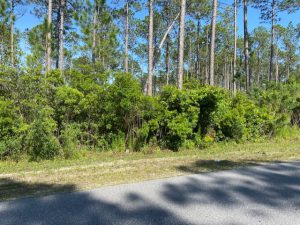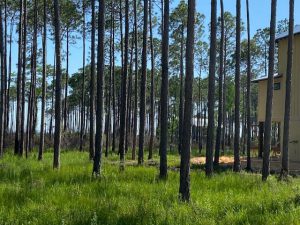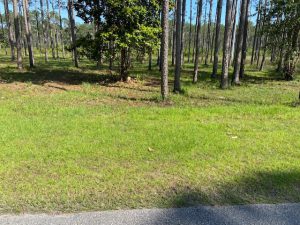
Firewise Landscaping
Are you Firewise with your home landscape? We plan for many situations in our lives from homeowner insurance to maintaining the car to planning for the future. Planning for defensive space around your home should also be part of long-term planning to protect it from possible wildfires.
Landscaping adds value to your home and with proper planning, planting and management it can be the first line of defense against a potential woodland fire. The first step is to plan a defensible space between your home and woodlands. This will be your buffer to slow, redirect or stop the fire movement. This buffer area can be planned and planted into a beautiful setting for all to enjoy with correct plant choices and maintenance.
The minimum of 100 feet is recommended space from the house and other structures to woodland areas that may have dense understory growth. These are plants growing under tall tree settings including small young trees, shrubs, perennials and fallen limbs, leaves or pine needles.
Plant selection considerations to the plant’s flammability potential should be a significant part of this process. First steps will include preparing the soil site according to Florida Friendly standards making sure the plants have a healthy establishment and future growth. This allows for greater moisture retention within the plant. The need to identify and use plants with low flammability characteristics is important in many ways including going with plants that grow more slowly with reduced natural dead branch production. Look for plants with open branching and with less leaf density.
There are three defense zones to mitigate potential fires near the home or other structures. Plan according to these three zones.
The immediate zone is within the 5-foot area of the structure. This is the area most vulnerable to embers being dispersed by the wind. Regular general maintenance on and around these areas is important to reducing places embers can settle and begin a fire. Make sure the roof and gutters are inspected and cleaned on a schedule and after storm events. Keep flammable materials such as firewood or leaf piles out of this area. Install permeable and impermeable hard surfaces and other noncombustible landscape in this immediate zone. The materials in this area can be stone, walkways and others.
The intermediate zone is the 5 to 30-foot area from the structure. Plan this landscape area with plants properly spaced to reduce fire jumping from plant to plant assisting in slowing the fire movement. Maintain lawn and native grasses to reduce excessive growth that can dry during certain times of year. Prune or remove overgrown plants under or near trees reducing the chance of the fire moving up into the canopy of the trees. Driveways and paths can service as fire breaks along with patios made of non-flammable materials.
The extended zone is the 30 to 100 plus foot zone from the structure. Spacing trees and other vegetation to keep fires small and manageable is the key. Keeping flames low to the ground and separated provides the chance to make mini-fire breaks. Be sure to remove any fallen or low dead branches from this area.
Become involved in neighbor or community conversations about best practices to prepare for a potential future wildfire event. It often takes hard work and focus to accomplish nearly a lifetime of building a home and setting it up to how you like it. Build time to plan for defending it from potential wildfires.



